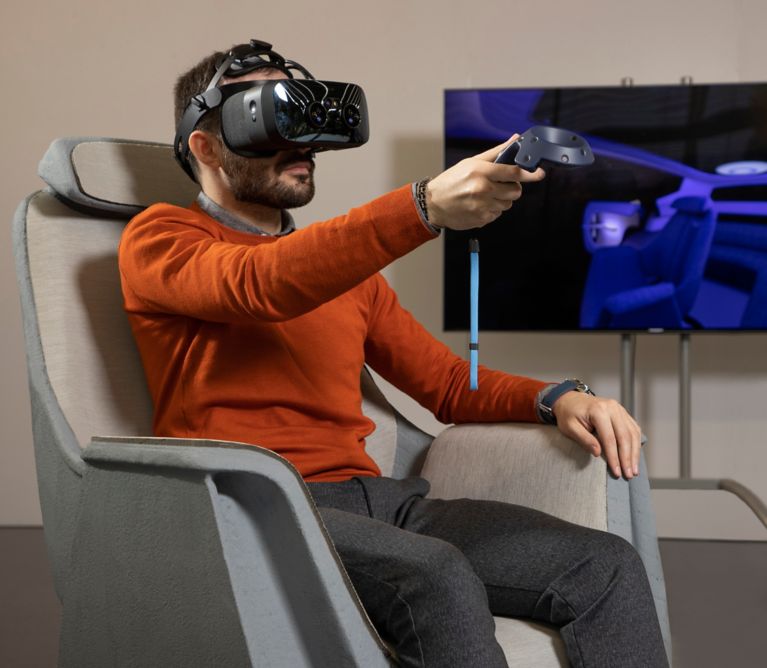- Hyundai has made significant investments in state-of-the-art virtual reality (VR) technology and infrastructure to transform its design process
- Company stakeholders can now collaborate across continents in a virtual space to speed up vehicle development and support the planet
- Hyundai’s latest concept SEVEN is the company’s first model to be designed completely digitally
In the past few years, Hyundai Motor has invested in a series of cutting-edge technological solutions to overhaul its design process. By embracing the latest innovations, such as virtual reality (VR) and 3D gravity sketching, the company has consolidated its position at the forefront of car design.
Beyond sheer aesthetics, the benefits of this approach are three-fold. Firstly, Hyundai’s designers are equipped with state-of-the-art tools that enable them to develop models with boundary-pushing features. Secondly, a streamlined digital process speeds up vehicle development. Finally, a lower carbon footprint supports the company’s environmental commitments.
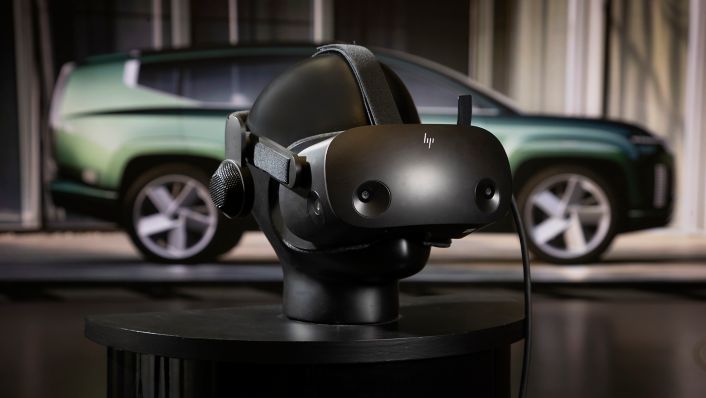
Stepping away from a traditional design approach
Much like today, Hyundai’s designers commenced the initial creative phase by creating pencil sketches on paper in the past. These images would reflect the kind of car they wanted to convey: perhaps one that is dynamic and sporty, or one that is brimming with new technology. Typically, these drawings would feature exaggerated proportions of the car, such as over-emphasised wheels and curves.
Once designers completed their initial sketches, they would compete with one another to have their proposals selected. After a winning design was selected, the chosen model would be developed as a scale model from clay, based on two-dimensional paper sketches.
Developing a scale model would take anywhere between four weeks and two months, depending on the schedule. Afterwards, the scale model would then be scanned and milled in a full-size. However, this approach was not without its drawbacks. After all, when shifting from a scale model to full-size, no line stays the same.
Previously, Hyundai’s designers were required to work together with clay modellers to refine the final design of an upcoming model. However, lines and surfaces had to be marked out using tape. On top of this, the company’s engineers were unable to work simultaneously with the designers, as they could only receive data after scanning the model with a photogrammetry system. Both of these factors made the process very time-consuming and cost-intensive.
It’s OK to fail: sketching remains fundamental for Hyundai designers
Hyundai’s design approach has undergone something of a revolution in recent years. Today, the company’s designers can draw upon a range of innovative tools. Before exploring some of these, it’s important to note that the initial sketching phase – and subsequent competition between different design teams to have their idea selected – remains fundamental to the development of the initial vision behind new Hyundai model.
If you're scared of doing something new, don't work in design!
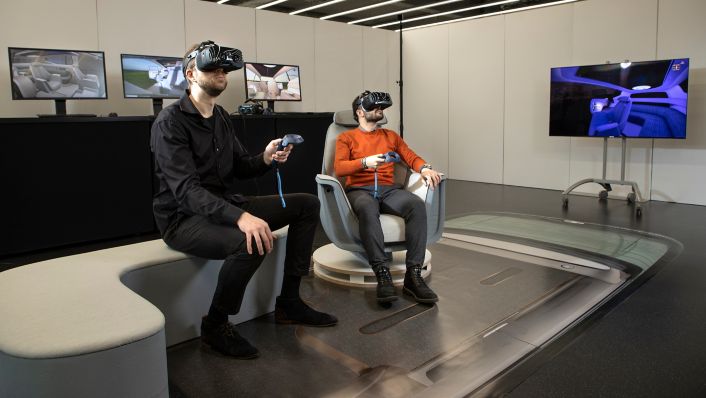
Simon Loasby joined Hyundai Motor Company in 2017 as Director of Hyundai Design in China. There, he played an integral role in defining Hyundai’s design identity in the country. Since 2019, he has been based at HMC’s global R&D and Design Center in Namyang, Korea, as Head of Styling. In this role, he has played a major role in bringing Sensuous Sportiness into the company’s BEV-dedicated IONIQ line-up brand, including IONIQ 5 and Hyundai’s latest concept, SEVEN. Each IONIQ model is like a chess set; they all belong together even though they look and perform differently.
Design is about not being fearful of getting it wrong sometimes – 99.9 per cent of what a designer does goes in the bin. I have a presentation which is called ‘Rubbish’, because the rubbish bin is something that has to become your friend as a designer. You have to expect that lots of your work will eventually go there: unfortunately 99.9 per cent of the design work we undertake lands in the bin. Our job is to explore and to find that amazing remaining 0.1 per cent. We have to be comfortable with getting things wrong, and we have to encourage our teams that it's OK to get it wrong. If you don't try going down there, you never know what's at the end of the path you're creating.
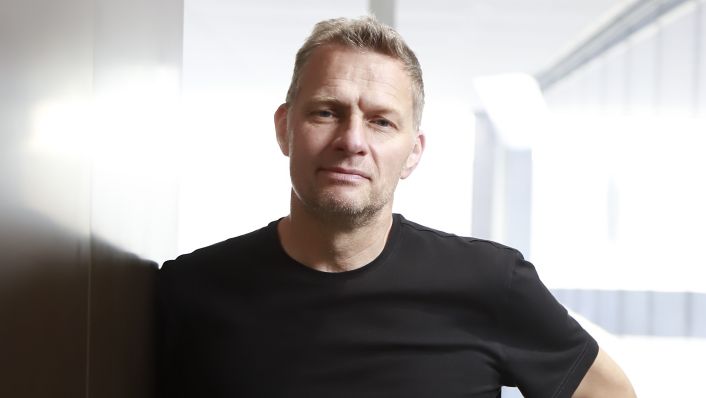
VR: the revolution
Modern design technology is now very fast and much more stable. Today, Hyundai no longer produces scale clay models; instead it utilises technologically advanced tools that are more intuitive, such as 3D digital design software. These enable the company’s engineers to mill full scale models using 3D data, which significantly speeds up the design process. Today, 80 per cent of Hyundai’s design development is fully-digital.
Hyundai’s designers work with industry-standard software that has been reprogrammed so that they can work in collaboration across multi-user and multi-location environments. This state-of-the-art technology includes laptops designed for high-performance gaming, in order to handle 3D graphics, motion technology from the film industry, as well as innovations derived from sport. Using this software, the designers can create models and immersive environments in VR that look extremely close to the real thing. The difference between modern design and the traditional approach is stark, and can be compared to the revolution cars undertook before and after anti-lock braking systems were introduced.
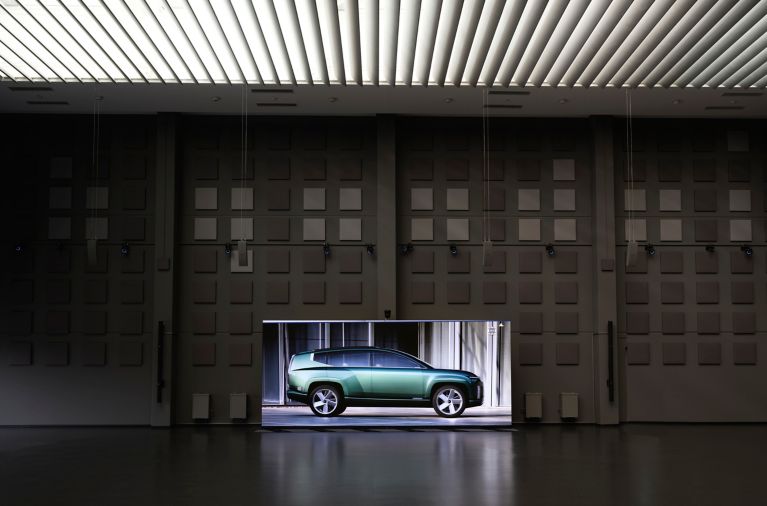
VR technology also opens up a host of new opportunities for Hyundai’s designers. For example, the gravity sketching tool enables designers to create more human-centric vehicle designs by working in 3D from the start. Designers swap their paper and pencils for a headset and controllers to become immersed in VR, imitating gestural interactions through motion tracking. By working in 3D, Hyundai’s designers can experiment with different proportions and build variations based on their ideas. Meanwhile, a 360-degree view of the vehicle allows them to sketch from any angle – in contrast to the traditional 2D process.
3D gravity sketching also enhances the collaboration between Hyundai’s exterior and interior designers. Through this technology, the two teams are able to work together simultaneously. While the exterior design team refine the digital model, the company’s interior designers can work in parallel by virtually stepping inside the car to develop features or make quick adjustments.
Another advantage of this technology is Hyundai’s designers’ ability to test unlimited colour options and material applications, including fabrics and leather, ambient lighting and other types of materials. As well as saving time, this also reduces shipping and travelling costs. In addition, this approach is much more sustainable as significantly less waste is produced, resulting in a dramatic reduction of CO2 emissions.
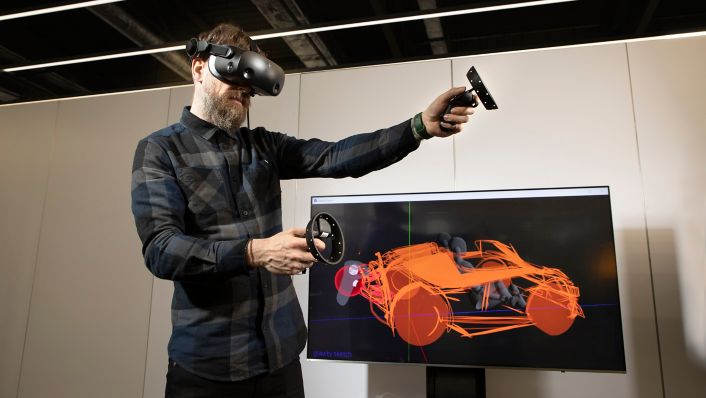
Hyundai’s VR design evaluation system
Hyundai’s design journey in multi-user wireless VR spaces started in 2017. Then, in December 2019, Hyundai Motor Company and Kia Motors Corporation announced an ambitious new virtual reality (VR) design evaluation system. Two years on, this has now been fully implemented. The system demonstrates a heightened focus on enhancing vehicle development processes through the implementation of VR technology. It simulates many aspects relating to a model under development, including interior and exterior design elements, as well as lighting, colours and materials.
These cutting-edge facilities in Namyang, Rüsselsheim, and Irvine, California, allow the designers to review a multitude of design concepts earlier in the developmental process, and in ways that were previously physically impossible. VR headsets allow colleagues from Hyundai’s Design and Engineering departments to enter into a virtual conference in real-time and simultaneously undertake vehicle design quality assessments and development verification processes, no matter where they are in the world.
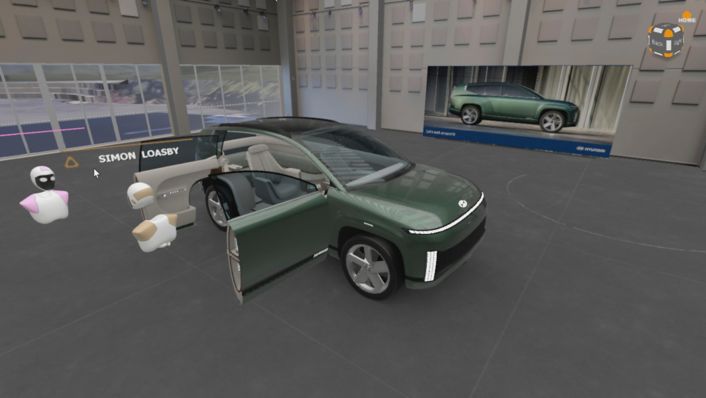
Hyundai has also established remote VR design assessment capabilities to enable real-time virtual collaboration between its design centers in Europe, Korea, China, India, Japan and the U.S.. The benefits for the company are clear: it has facilitated greater cross-team – and intercontinental – collaboration than ever before.
These changes were already underway before COVID-19 emerged and sent the world into lockdown in early 2020. According to Simon Loasby, the pandemic served as a catalyst for Hyundai’s global design workforce, accelerating the transition to digitalisation and agile working.
When our studios across the world were sending all the designers home, we were fortunate that we were already operating a very well-oiled machine in terms of remote virtual connection, where we could all connect across three different continents and five different locations into a virtual working space and walk around the cars.
At the 2021 AutoMobility LA, Hyundai unveiled the SEVEN concept, its first fully-digitally designed model. Its expansive exterior design leverages Hyundai Motor Group’s Electric-Global Modular Platform (E-GMP). Meanwhile, its interior architecture guarantees greater freedom and comfort for passengers. With furniture-like seats and hygienically-focused functions, it provides a premium lounge experience.
During the pandemic, our SEVEN concept really benefited from this virtual process. When we completed the digtial design sign off of the car, Luc Donckerwolke (Executive Vice President for Design and Chief Creative Officer of Hyundai Motor Group), SangYup Lee (Senior Vice President at HMC and Head of Hyundai Global Design Center) and I were all in completely different locations, while our European team were in the discussion, too. We were in the same virtual location looking at the model, and did a complete virtual sign off of the whole car: both exterior and interior. Remarkably, I hadn’t seen the physical model at that point, which must be a world-first for a lead automotive designer!
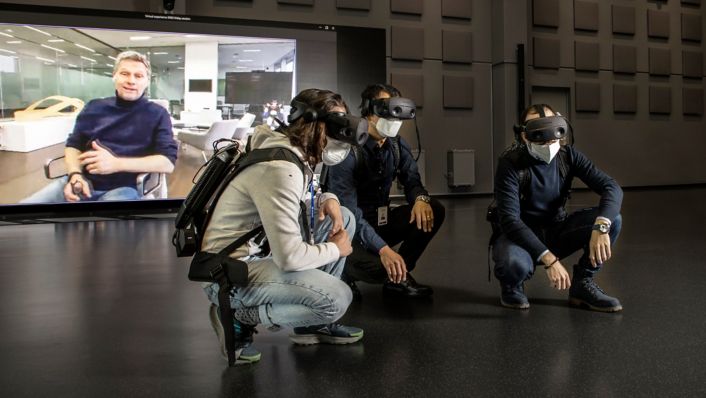
Simon Loasby’s ‘James Bond suitcase’
Further evidence of Hyundai’s technological innovation can be found in the form of a small portmanteau the company’s digital team built especially for Simon Loasby. So enamoured is Hyundai’s Head of Styling with the portable device, he affectionately refers to it as his ‘James Bond suitcase’ in reference to the famous cinematic spy (and fellow Briton). Loasby recently spoke about it when he appeared on Hyundai’s Are We There Yet? podcast.
Shaped inconspiculously like a travel bag, Loasby’s ‘James Bond suitcase’ is equipped with a laptop, VR goggles, cables and handsets. He is able to take it anywhere and participate in virtual design reviews with colleagues from all around the world.
I’m very fond the carry-on bag I call my ‘James Bond suitcase’, because it ensures I can connect to our virtual conferencing space and conduct design reviews from anywhere, at any time. In fact, one of the craziest design reviews I did was at Incheon Airport. I was about to fly somewhere, but I needed to check in on the progress of a development quickly. So I took the gear out, plugged it in and set up my virtual studio next to Starbucks and conducted a review from the departure terminal!
Introducing Hyundai’s state-of-the-art European Vision Lab
Hyundai’s European Design Center is based at Hyundai Motor Europe Technical Center (HMETC) in Rüsselsheim, Germany. Over the last five years, this regional headquarters has worked in much closer collaboration with the company’s global R&D Center in Namyang. The aforementioned advancements in VR technology allow designers based at HMETC to communicate with their counterparts in Korea at a much earlier stage of development.
HMETC’s 20x23m Vision Lab, which was previous used for analogue presentations, recently received a substantial upgrade. This was completed in November 2021. It has been completely renovated and is now outfitted with some of the most advanced design technology in the automotive industry, including 48 cameras with active tracking, underscoring Hyundai’s transition to becoming a Smart Mobility Solution Provider.
Our new HMETC Vision Lab is a marvel in terms of infrastructure and technology. The combination of 3D software and VR goggles enables us to dive into a virtual environment, seeing the car in full size and 3D as if we were standing right next to a physical model. In this virtual 3D environment, we can also stand just one metre away from our Global Head of Design, who is based 10,000 kilometres away from the European studio. This means we’re able to freely exchange concepts within our global design organisation and make much quicker developmental decisions and technical assessments from the very outset of a project.
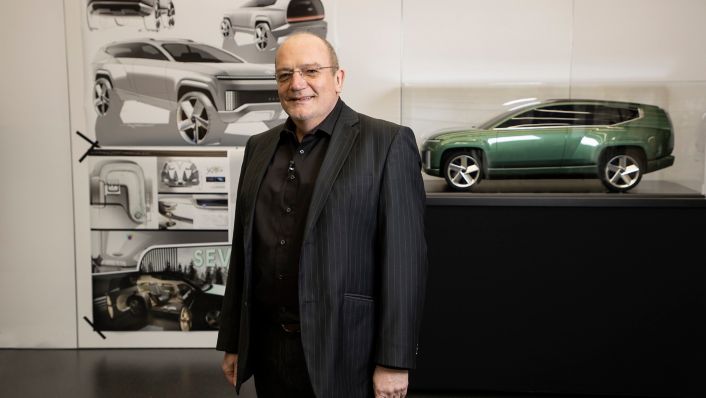
One of the major enhancements to HMETC’s Vision Lab is its LED wall, which features an integrated 8K video system. Up to six to eight streams can be displayed on the screen, which allows people who are not participating in a virtual conference with VR headsets to join.
HMETC colleagues also have access to state-of-the-art goggles by HP. These are equipped with a clip from renowned motion tracking provider OptiTrack, which features eight trackers that give light signals to the cameras. Boasting accuracy within one centimetre, the goggles offer a very precise visualisation of the design that is close to a real-world replication.
In the Vision Lab, our designers are able to make adjustments to the digital model with much greater accuracy using not just VR, but also AR and mixed reality. They’re able to hone in on a bumper detail using digital laser pointers, for example, and can define lines and shapes more accurately and efficiently than in the past. The almost immediate visualisation of design data can also be quickly shared with engineers at a very early stage of the project, so the designers get faster feedback for modifications. These levels of precision allow Hyundai to respond quickly and react with agility to the needs of our customers, as well as the paradigm shifts in the automotive industry.
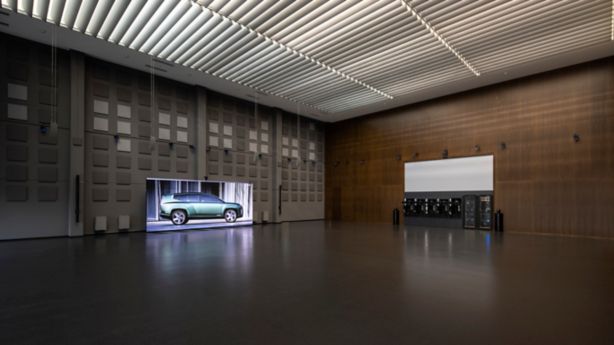
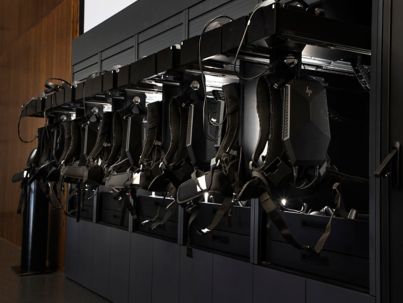
VR technology promises a sustainable future
VR technology is continuing to evolve. In the future, it will offer much higher levels of detail and operate at far quicker speeds. It is therefore set to play an increasingly prominent role for Hyundai’s designers and engineers. In addition, advances in AR and mixed reality will enable the company’s colleagues to interact with one another even more immersively.
However, one fundamental benefit that should not be overlooked is its positive environmental impact. A digital design process produces are much lower carbon footprint, as far fewer clay, paper and waste materials are used in the process. For the development of SEVEN, Hyundai produced one clay model for verification at the end, rather than a multitude of scale clay models. By meeting in a virtual conference space, Hyundai’s designers are no longer required to frequently travel around the globe, expending thousands of air miles in the process. Going forward, this will contribute towards Hyundai achieving its goal of carbon neutrality by 2045.
Disclaimer: CO2 and emissions data
Electricity consumption combined for the Hyundai IONIQ 5 58 kWh with 2WD in kWh/100 km: 16.7; CO2 emissions combined in g/km: 0 (WLTP)
Electricity consumption combined for the Hyundai IONIQ 5 58 kWh with 4WD in kWh/100 km: 18.1; CO2 emissions combined in g/km: 0 (WLTP)
Electricity consumption combined for the Hyundai IONIQ 5 72.6 kWh (19” alloy rims) with 2WD in kWh/100 km: 16.8; CO2 emissions combined in g/km: 0 (WLTP)
Electricity consumption combined for the Hyundai IONIQ 5 72.6 kWh (20” alloy rims) with 2WD in kWh/100 km: 17.9; CO2 emissions combined in g/km: 0 (WLTP)
Electricity consumption combined for the Hyundai IONIQ 5 72.6 kWh (19” alloy rims) with 4WD in kWh/100 km: 17.7; CO2 emissions combined in g/km: 0 (WLTP)
Electricity consumption combined for the Hyundai IONIQ 5 72.6 kWh (20” alloy rims) with 4WD in kWh/100 km: 19.0; CO2 emissions combined in g/km: 0 (WLTP)
Electricity consumption combined for the Hyundai IONIQ 5 77.4 kWh (19” alloy rims) with 2WD in kWh/100 km: 16.8; CO2 emissions combined in g/km: 0 (WLTP target)
Electricity consumption combined for the Hyundai IONIQ 5 77.4 kWh (20” alloy rims) with 2WD in kWh/100 km: 17.9; CO2 emissions combined in g/km: 0 (WLTP target)
Electricity consumption combined for the Hyundai IONIQ 5 77.4 kWh (19” alloy rims) with 4WD in kWh/100 km: 17.7; CO2 emissions combined in g/km: 0 (WLTP target)
Electricity consumption combined for the Hyundai IONIQ 5 77.4 kWh (20” alloy rims) with 4WD in kWh/100 km: 19.0; CO2 emissions combined in g/km: 0 (WLTP target)

